by Lynn Barendsen
What do we value, and how do we spend our time? Both are key topics on the Good Project; it’s my hunch that responses to both questions have been considerably impacted by the pandemic. In what follows, I review some research evidence and share my own reflections.
In my analysis, perhaps not surprisingly, values HAVE shifted. Perhaps more puzzling is the nature of the relationship between our values and how we occupy ourselves. As we all know, the past two years have seen a remarkable change in our daily activities as we’ve adjusted (and readjusted, and then readjusted again) to the realities of life during a pandemic. So: have our values evolved because our activities have changed, or have we changed our activities because of what we value?
How we spend our time is clearly related to what we value. Perhaps we do what we do because of what we value, or alternatively, perhaps we recognize our values—and whether or not they are being honored-- because of how we’ve been spending our time. As this (link here) New York Times article points out, during the pandemic, individuals spent far more time alone, or only with close family members. For some, this may mean a renewed appreciation of solitude (what they have); for others it may mean a recognition of the value of spending time with other family and friends (what they can’t have).
Two studies help to unpack these issues a bit more. A study (link here) of over 1000 Australians, ranging in age from 18-75, was conducted over several years (both pre and post pandemic); the study revealed two sets of contact post pandemic (one at the beginning, and one 8-9 months later). Using Shalom Schwartz’s (link here) categorization of values, the authors cite four sets of values: conservation values, openness to change values, self-transcendence values and self-enhancement values. Three of the four categories (all but self-enhancement values) changed during the pandemic. Conservation values (keeping safe, preserving order, stability and tradition) all became more important at the beginning of the pandemic, and as time passed, remained consistent at their new level. Perhaps in this case, the actions related to “staying safe” and positive results reinforced the importance of the value of stability.
Openness to change values (independence, seeking adventure, creativity, change) decreased at the beginning of the pandemic, but later, increased. At the beginning of the pandemic, individuals had less opportunity for adventure, certainly outside their homes; as time went on, perhaps adventure and creativity became increasingly important as individuals sought alternative modes of entertainment.
Self-transcendence values (caring for others and for the world) were initially stable, but later decreased. The authors suggest that perhaps as a result of being so focused on self-preservation, individuals had little capacity left for empathy. Importantly, many countries were more severely impacted by the pandemic than Australia, so it’s crucial to consider alternative, more extensive studies.
Another study (link here) was conducted by the research agency Glocalities. Investigators interviewed 8,761 individuals in 24 countries, 9 months apart, at the beginning and end of 2020. The study sought to understand how the pandemic impacted individuals’ beliefs and values.
Not surprisingly, individuals increasingly value health and precautions, or taking care. As freedoms became more limited (i.e., as a result of lockdowns), they became more valued. Additionally, a heightened awareness of economic disparities has led to increased calls for equity. The report concludes that although individuals are increasingly pessimistic and worried, they are simultaneously revisiting their values and thinking more about others besides themselves. Interestingly, this contradicts the Australian study (which found a decrease in caring for others and the world).
These are just a few examples of what will likely become an ongoing investigation into the impact of these past two years on individual values. Clearly there are ambiguities that need to be resolved. Whether these initial trends are short or long term, whether they hold true across racial, cultural, socio-economic and other differences, is still to be determined. But these are important questions, and we will continue to look for any emerging patterns.
Closer to home, over the course of the pandemic, our GP Team has had many conversations with colleagues (and ourselves) about values. We consider ourselves fortunate. Although each of us have been impacted both personally and professionally by the pandemic, unlike many around the world, we have been able to keep working and able to do so from the safety of our homes. Of course there have been challenges (juggling parenting responsibilities with work responsibilities, for example), but for the most part, we have all appreciated supportive colleagues and work that feels important and timely.
Additionally, we’ve remarked upon the fact that ethical dilemmas (a core component of Good Project resources) are in abundance these days. Constantly struggling with the best decision (as it’s not always clear that there’s one “right” answer) is important and exhausting. Often it comes down to values, and what we value most. Or, as Michael Rozier explains, “our choices, individually and collectively, reveal who we are and who we want to be.” In an article (link here) written relatively early during the pandemic (May 2020), this scholar asserts that the pandemic offers an opportunity to embrace previously undervalued virtues such as self-sacrifice and prudence.
Curious to consider whether – and, if so, how-- our own values have shifted over the past two years, four of us recently revisited the value sort (link here). Interestingly, three of us rated “creating balance in one’s life” and “rewarding and supportive relationships” in our top four values. Three of us also had either “understanding, helping, serving others” or “social concerns, pursuing the common good” as one of our top 4.
I don’t want to speak for others, but for me the exercise brought about some useful realizations. I recognized that balance feels more important than it has before because the line between my personal and professional lives feels more blurred. For the bulk of the past few years, both my husband and I have been working from home, and for some of that time, our two college-aged sons were also working at home. We tried hard, for example, to make weekends feel different from the week and to establish boundaries. Now that our sons have returned to college and it’s just the two of us, it’s easier to just keep working well into the evening, and balance becomes increasingly important. This was exacerbated during the lockdown when our usual exercise (regular martial arts practice at our dojo) was impossible. I recognize that I value balance more because I’ve missed it, and because I realize how essential it is to my peace of mind.
Additionally, both the pandemic and our current fraught political climate have made me more aware than ever of economic disparities. Financial status has had a major impact on how individuals experience the pandemic, and economic divides - previously substantial - have only increased. I feel more responsibility than I ever have before: to do work that’s important, to think about my neighbors, to be careful and responsible in my actions. The impact of everything we do, of all our actions, feels real, and I’m constantly examining my decision making. This is why “understanding and helping others” and “honesty and integrity” are in my top four.
To return then to one of my initial questions: have my values shaped how I spend my time, or is it the other way around? I’ll hedge and say it depends. There are core values that will always be a part of how I approach the world - “rewarding and supportive relationships” come to mind. No matter what the current climate, these will always be something I place high on my list of values. But other values may shift in and out of the top four depending on events. The momentary pause to reflect is helpful and serves as a check in the midst of an otherwise uncertain time. Am I still acting in ways that are true to me? What IS important right now?
Have a look at the value sort (link here) and our video (link here) which asks you to consider how you spend your time. We’d love to hear if you’ve noticed any changes in your own perspective, and if not, why you think your views have remained consistent over time.







